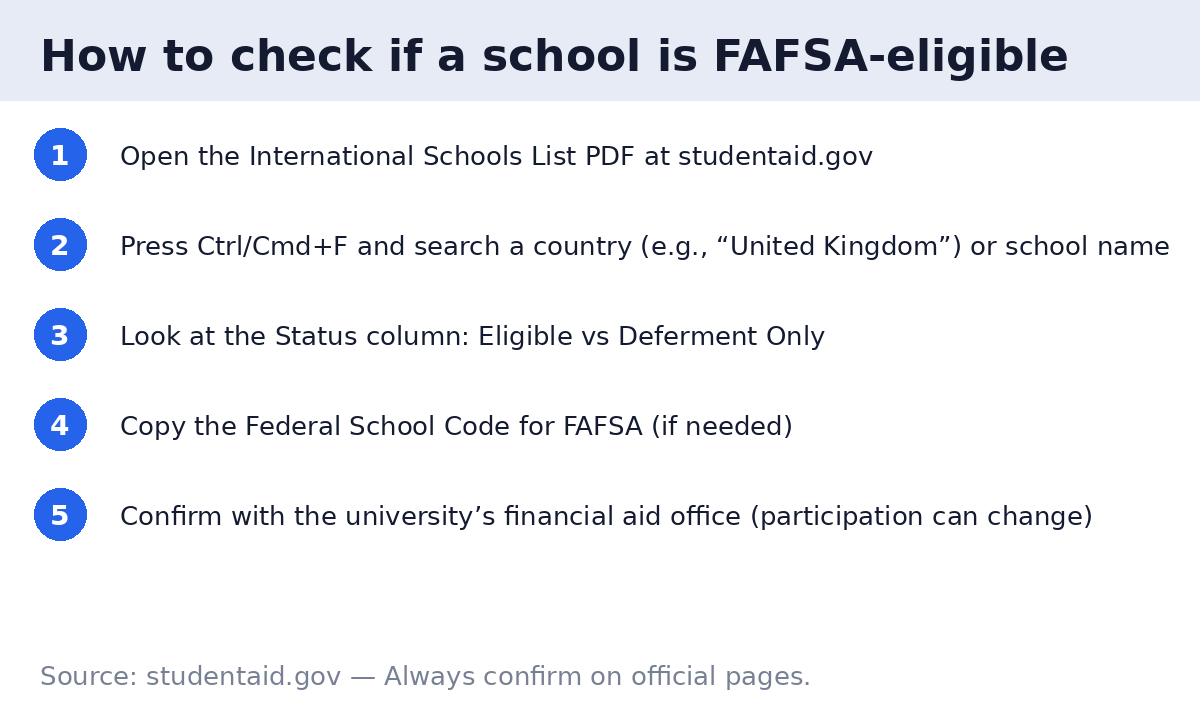Study in Europe as an American
Lower tuition. English-taught programs. 3-year bachelor’s degrees. We’ll help you shortlist programs, plan requirements, and apply with confidence.
Why EU/UK Universities?
- World-class degrees with significantly lower tuition
- Hundreds of programs taught entirely in English
- Many 3-year bachelor’s degrees (finish sooner)
- International experience that stands out to employers
Who we help
- US students seeking affordable, reputable degrees in Europe
- Families relocating or traveling while students keep a US diploma online
- Homeschoolers building a transcript toward EU/UK entry
Costs vs. US
Big picture: For many programs, total cost can be substantially lower than in the US—often 50–80% less on tuition alone—because of lower public tuition in some countries and 3-year degrees. Actual costs vary widely by country, city, and program. Always confirm on official university pages.
- 3-year bachelor’s (many EU) vs. 4-year US reduces total years of tuition & living costs
- Some public universities list comparatively lower tuition for internationals
- Cost of living varies by city; capitals are usually higher than regional cities
- Scholarships/fee waivers exist but are competitive and program specific
Tip: Consider housing outside city centers, student transit discounts, and part-time work rules (vary by visa).
Total Cost Estimator (rough)
Adjust the numbers to compare a typical 4-year US degree vs. a 3-year EU/UK degree.
US
EU/UK
US total (est.): $0
EU/UK total (est.): $0
Difference: $0
Disclaimer: This is a rough illustration. Confirm all costs with official program pages and visa rules.
U.S. Federal Aid (FAFSA) for EU/UK Universities
U.S. citizens and eligible noncitizens may be able to use Direct Loans at foreign universities that participate in U.S. federal student aid. Many schools in the EU/UK are on this list. Grants like Pell are generally not available for direct enrollment at a foreign school; rules differ for U.S. school–run study abroad.
- How to check eligibility: look up the school in the international schools list or search its Federal School Code.
- Status types: “Eligible” schools can process U.S. Direct Loans; “Deferment Only” schools don’t offer new aid but can defer existing federal loans while you’re enrolled.
- Search tip: In the PDF, press Ctrl/Cmd+F and type a country (e.g., “United Kingdom”) or a school name.
How to check if a school is FAFSA-eligible

- Open the International Schools List (PDF)
- Press Ctrl/Cmd+F and search a country (e.g., “United Kingdom”) or school name
- Check Status: Eligible vs Deferment Only
- Copy the Federal School Code for FAFSA (if applicable)
- Confirm with the university’s financial aid office (participation can change)
Scholarships & Fee Waivers
- University-specific merit awards and country scholarships (check official pages)
- Early-bird tuition discounts and application fee waivers (varies by program)
- Typical docs: transcripts, recommendations, motivation statement, proof of finances
- Deadlines can be earlier than admissions—track a separate scholarship calendar
- External funds: foundations, government cultural institutes, and US-based orgs
We’ll shortlist realistic scholarships for your profile and set reminders for deadlines.
FAQ
Will EU/UK degrees be recognized in the US?
Many European universities are globally recognized. We’ll help you choose reputable programs that align with your goals.
Do I have to speak another language?
No—many programs are taught in English. Some countries still require language exposure; we’ll flag those early.
Country Guides
Netherlands
English-taught programs; transparent requirements for US students.
United Kingdom
3-year degrees; clear subject prerequisites for competitive courses.
Germany
Low-cost public universities; some English-medium programs.
